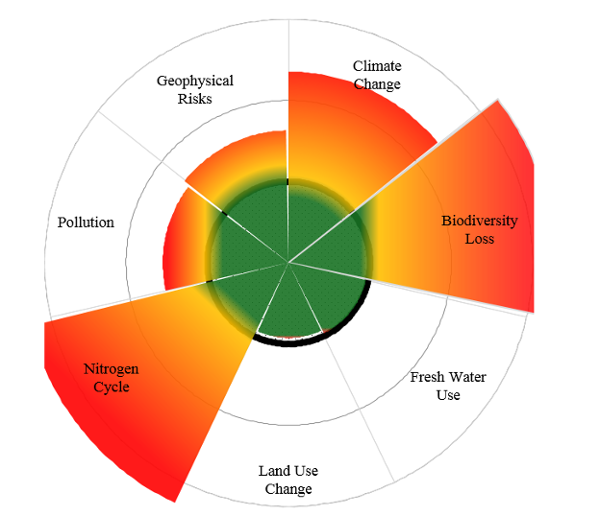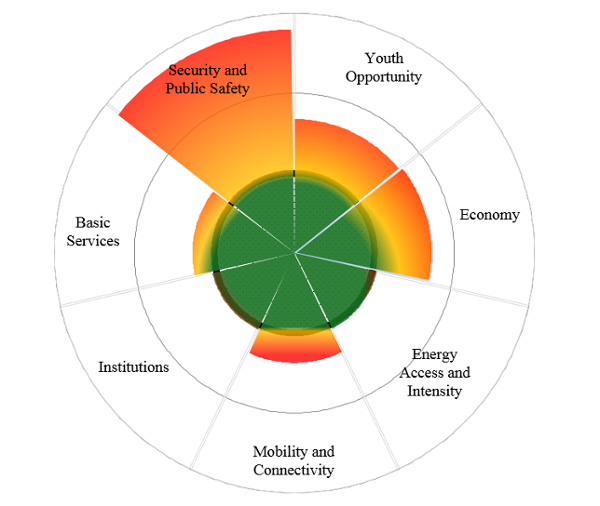Sustainability status
Physical and Socio-Economic Sustainability Status of the World
Building on the work of Rockstrom et al, 2009 [1], Dearing et al. [2] and Raworth [3], researchers at UOIT are proposing a new framework for sustainability that integrate physical and socio-economic indicators to demonstrate the physical limits of sustainability for the world’s largest cities.
The physical science indicators adapted from the boundaries proposed by Rockstrom et al [1] are demonstrated in Figure 1 and Table 1.

Figure 1: Physical Science Indicators for Cities in a Global Context; Adapted from the Boundaries proposed by Rockstrom et al [1]
The socio-economic indicators are demonstrated in Figure 2 and Table 2, which provides approximate global social boundaries (i.e. socio-economic) estimated in relation to existing targets and global limits.

Figure 2: Socio-Economic Limits: Global Situation Compared to Targets
References
[1] Johan Rockstrom, Will Steffen, Kevin Noone, Asa Persson, F. Stuart Chapin, Eric F. Lambin, Timothy M. Lenton, Marten Scheffer, Carl Folke, Hans Joachim Schellnhuber, Bjorn Nykvist, Cynthia A. de Wit, Terry Hughes, Sander van der Leeuw, Henning Rodhe, Sverker Sorlin, Peter K. Snyder, Robert Costanza, Uno Svedin, Malin Falkenmark, Louise Karlberg, Robert W. Corell, Victoria J. Fabry, James Hansen, Brian Walker, Diana Liverman, Katherine Richardson, Paul Crutzen, and Jonathan A. Foley, 2009, "A Safe Operating Space for Humanity," Nature, 461, pp. 472-475.
[2] John A. Dearing, Rong Wang, Ke Zhang, James G. Dyke, Helmut Haberl, Md Sarwar Hossain, Peter G. Langdon, Timothy M. Lenton, Kate Raworth, Sally Brown, Jacob Carstensen, Megan J. Cole, Sarah E. Cornell, Terence P. Dawson, C. Patrick Doncaster, Felix Eigenbrod, Martina Flörke, Elizabeth Jeffers, Anson W. Mackay, Björn Nykvist, and Guy M. Poppy, 2014, "Safe and Just Operating Spaces for Regional Social-Ecological Systems," Global Environmental Change, 28, pp. 227-238.
[3] Kate Raworth, 2012, A Safe and Just Space for Humanity, Oxfam International, Oxford.
Please note this is a draft version. For development purposes only.